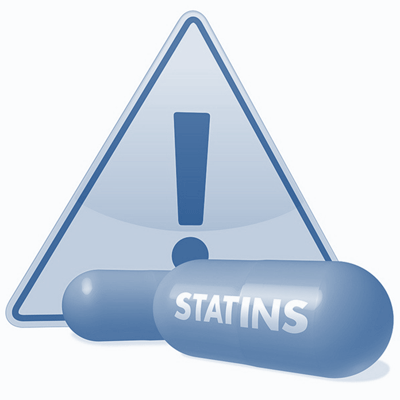For the past several years, my husband’s physicians have been trying to get him to take statin drugs to manage cholesterol. That recommendation struck me as odd given that his serum cholesterol is relatively low, and he maintains a healthy weight and diet. Moreover, a good friend developed severe muscle pain and weakness when she took statins. So my husband opted to take a pass.
 Dr. David Perlmutter, renowned neurologist and author of the international best-seller Grain Brain, would applaud my husband’s decision. As it turns out, 60-70% of our brain matter is fat. (Yep – “fat head” is an apt description for all of us!) Our brains rely heavily on a steady supply of cholesterol as an antioxidant to quell inflammation and as a source of energy to grow and sustain neural synapses. Low Density Lipoproteins (LDLs) capture this life-giving cholesterol and transport it to the brain. Statin drugs diminish the body’s LDL supply which reduces the brain’s access to cholesterol. When taking statins, some folks experience cognitive impairment, confusion, and memory loss as a result. Stains also interfere with the brain’s serotonin receptors, leading to a higher risk of depression and suicide.
Dr. David Perlmutter, renowned neurologist and author of the international best-seller Grain Brain, would applaud my husband’s decision. As it turns out, 60-70% of our brain matter is fat. (Yep – “fat head” is an apt description for all of us!) Our brains rely heavily on a steady supply of cholesterol as an antioxidant to quell inflammation and as a source of energy to grow and sustain neural synapses. Low Density Lipoproteins (LDLs) capture this life-giving cholesterol and transport it to the brain. Statin drugs diminish the body’s LDL supply which reduces the brain’s access to cholesterol. When taking statins, some folks experience cognitive impairment, confusion, and memory loss as a result. Stains also interfere with the brain’s serotonin receptors, leading to a higher risk of depression and suicide.
Statin drugs also disrupt production of coenzyme Q10 (CoQ10), a fat-soluble substance known to be an important nutrient for the heart. Low levels of CoQ10 give rise to fatigue, muscular pain, and problems with mobility and balance.
As a post-menopausal woman, I was especially alarmed by a couple of statistics that Dr. Perlmutter shared. In particular, post-menopausal women who take stains have a 48% increase in risk for diabetes. Having diabetes doubles the risk for Alzheimer’s disease!
So how do we reconcile these facts with a multi-billion dollar statin market? Aren’t high levels of LDLs associated with increased risk of coronary artery disease (CAD)?
Statin proponents frequently cite the JUPITER Study in which participants on statins experienced 31 heart attacks and those on the placebo experienced 68. This simple numeric comparison suggests a 58% reduction in relative risk. However, given that the experiment and control groups each had nearly 9,000 participants, the overall risk of heart attack went from a very low 0.76% in the control group to 0.35% in the statin group. Thus, the minimal protection one might achieve needs to be weighed against the high percentage of people who have unwelcome side effects from the drug.
The answer to the second question appears to be yes… and no. Healthy LDLs are not a risk for coronary artery disease. They go about their business and leave the surrounding tissues alone. However, when excess sugar molecules in the blood stream attach themselves to LDLs, the LDLs become oxidized – i.e., lose electrons and transform into free radicals. They cease to function properly and become “sticky” when encountering the tissues surrounding the blood vessels. Once these tissues are damaged by oxidized LDLs, inflammation starts. When the body’s immune system deals with the inflammation, foam cells build up. That build-up leads to arterial blockage.
Dr. Perlmutter’s findings align with Drs. Bowden and Sinatra’s book, The Great Cholesterol Myth. Eating foods high in cholesterol doesn’t give rise to CAD, per se. Diets high in sugar, processed carbs, et al do! That being said, we don’t get a free pass to ingest a bunch of fats. Every author I’ve read lately admonishes readers to focus on consuming healthy fats (Omega 3s) and limit intake of unhealthy ones (Omega 6s). Omega 6 fats are precursors to inflammatory compounds; omega 3 fats are anti-inflammatory.
Prescription drugs certainly save lives. Though I am not a trained physician, I expect that there are patients whose conditions merit serious consideration of pharmaceutical intervention via statins. However, my husband and I prefer to make dietary and lifestyle choices to improve our well-being and use medication only when absolutely necessary.